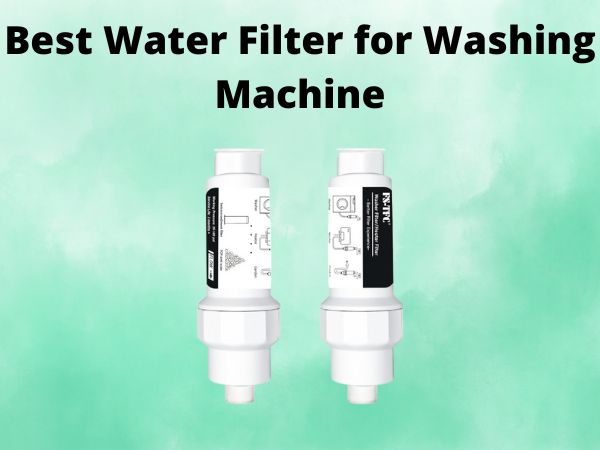How to Clean a Primo Bottom Load Water Dispenser [Properly]
Owning a Primo bottom load water dispenser is incredibly convenient, isn’t it? But like anything else, it requires regular maintenance to keep it performing its best. Let’s dive into the nitty-gritty of cleaning your dispenser, because a clean dispenser means healthier hydration for you and your family.
Table of Contents
Introduction to Primo Bottom Load Water Dispenser
Primo bottom load water dispensers are a fantastic solution for anyone looking for the convenience of easily accessible cold and hot water. Have you ever noticed how the bottom load design spares your back from heavy lifting? It’s the little things that count, like not struggling with a heavy water jug and just enjoying fresh water at the touch of a button.
Why Cleaning is Essential
While your dispenser might seem low-maintenance, routine cleaning is key. Why, you ask? Let’s unpack a couple of significant reasons.
Health Concerns
First off, we have the health aspect. A water dispenser is typically in constant contact with other surfaces and containers. This means potential germs could easily find a home in your dispenser if it’s not cleaned regularly. Wouldn’t you want to keep those at a minimum?
Performance Issues
Beyond health, neglecting regular cleaning can lead to performance issues. Your dispenser might not cool or heat water as efficiently, resulting in suboptimal performance. Ever tried getting a glass of cold water only to find it’s lukewarm? Regular cleaning helps prevent these mishaps.
Tools and Materials Needed
Before diving into cleaning, gather the necessary tools and materials. Here’s a quick checklist to keep handy:
- Soft cloth or sponge
- Mild dish soap
- White vinegar or a commercial descaling agent
- Bucket
- Toothbrush or small cleaning brush
- Clean, lint-free towels
Preparing the Dispenser for Cleaning
Before you embark on the cleaning journey, preparation is essential. Start by unplugging the unit. Safety first, right? Then, remove the water bottle and set it aside. Drain any remaining water from reservoirs to ensure the unit is completely empty. This preparatory step ensures a thorough clean without any electrical hazards.
The Cleaning Process
Step 1: Unplug and Disassemble
Begin by unplugging the dispenser to eliminate any risk of electric shock. Carefully disassemble parts, such as the drip tray and nozzle, to allow thorough cleaning.
Step 2: Clean the Exterior
Using a soft cloth and mild soap, gently clean the exterior surfaces. Pay special attention to spots prone to fingerprints and dirt. Think of it as giving your dispenser a refreshing shower!
Step 3: Sanitize the Water Reservoir
To sanitize, mix a solution of one part vinegar to three parts water in a bucket. Pour the solution into the water reservoir and allow it to sit for 10-15 minutes. This helps in breaking down mineral deposits and eliminating bacteria. Then, drain the mixture.
Step 4: Clean Drip Tray and Other Components
Use a toothbrush to scrub grime or scale build-up from the drip tray and nozzle. Clean each component thoroughly before rinsing with water. It’s like giving your dispenser’s detachable parts a spa day!
Step 5: Reassemble and Rinse
Once everything is clean, reassemble all parts. Fill the reservoir with fresh water and run it through a few cycles to rinse out any remaining vinegar solution. After this rinse, your dispenser should be good as new!
Maintaining Your Dispenser
Regular Cleaning Schedule
Here’s the deal: set a regular cleaning schedule every three months. This simple habit keeps your dispenser running efficiently and minimizes bacteria build-up.
Signs Your Dispenser Needs Cleaning
Noticing odors or unpleasant tastes? These are telltale signs that your dispenser is overdue for cleaning. Acting promptly keeps your water tasting fresh and delightful.
Water Quality Control
Ensure the water you use is filtered or purified. This helps reduce sediment buildup in your dispenser, decreasing the need for frequent deep cleaning.
Common Mistakes to Avoid
Avoid using harsh chemicals that can damage the internal components of your dispenser. Stick to the tried-and-tested vinegar solution or commercial descaling agents recommended by Primo.
Conclusion
By now, it’s clear that cleaning your Primo bottom load water dispenser is crucial for health, performance, and longevity. Treat your dispenser like a trusted friend—show it some love with regular cleaning, and it’ll keep providing you with refreshing water for years to come. Armed with this guide, maintaining your dispenser should now be a breeze. Cheers to cleaner, healthier hydration!
FAQs
How often should I clean my Primo bottom load water dispenser?
Ideally, you should clean your dispenser every three months. However, if you notice any foul smells or taste in the water, cleaning should be done immediately.
Can I use bleach to clean my water dispenser?
It’s recommended to use a vinegar solution or a commercial descaling agent. Bleach might be too harsh and could potentially damage the components of your dispenser.
Why does my water taste funny even after cleaning the dispenser?
If the water tastes off after cleaning, try using filtered or purified water, as tap water can sometimes carry minerals that affect taste.
What should I do if there’s a leak after cleaning?
Check that all components are properly reassembled. Ensure that the bottle is seated correctly. If the issue persists, you may need to contact customer support for further assistance.
Is it necessary to unplug the unit when cleaning?
Yes, always unplug your dispenser before cleaning to avoid any risk of electrical shock.



